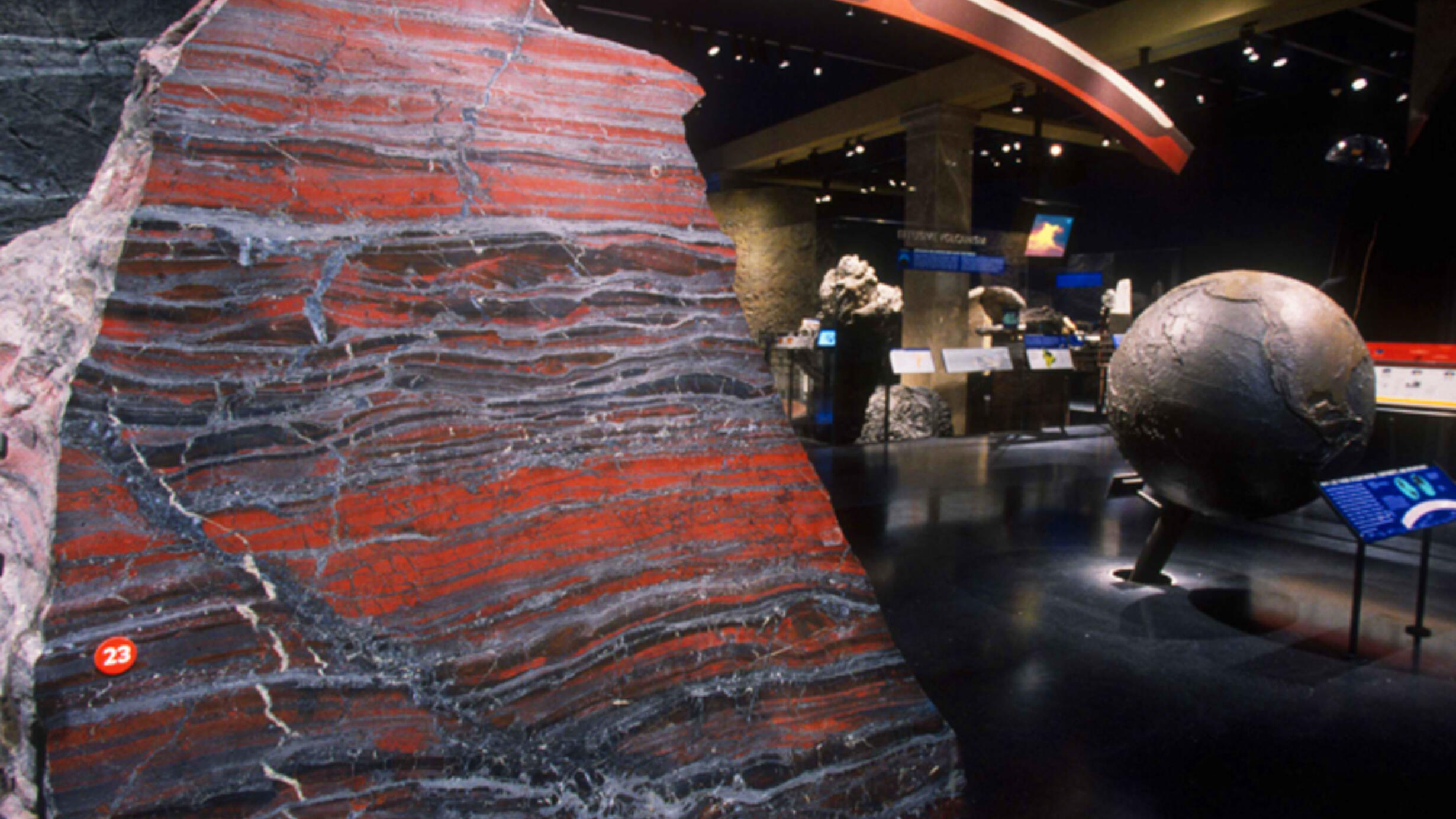Banded Iron Formation
Part of Hall of Planet Earth.
Part of Hall of Planet Earth.

Photosynthetic organisms were making oxygen, but it reacted with the iron dissolved in seawater to form iron oxide minerals on the ocean floor, creating banded iron formations.
The dark layers in this boulder are mainly composed of magnetite (Fe3O4) while the red layers are chalcedony, a form of silica (SiO2) that is colored red by tiny iron oxide particles. Some geologists suggest that the layers formed annually with the changing seasons.
This rock records a time from the Earth's distant past, when evolving life profoundly influenced the planet's evolution. The oxygen that is now in the Earth's atmosphere was not there at the beginning. Early life began to generate oxygen by converting the Sun's energy into food. That caused the iron that was dissolved in the oceans to precipitate out as iron oxide minerals. This rock, with its layers of red jasper and iron magnetite, was formed billions of years ago as part of that process. It is a reminder that life made our atmosphere breathable.
Donated by the Dofasco Company, Strathy Township, Ontario, Canada.